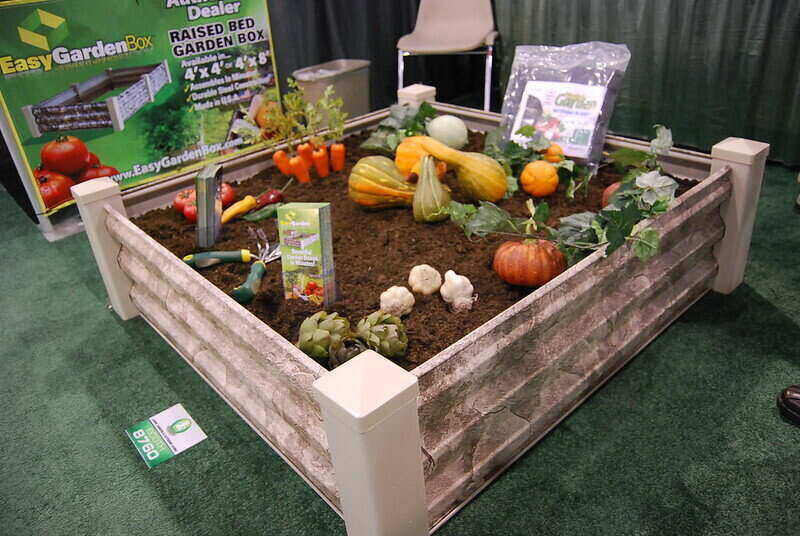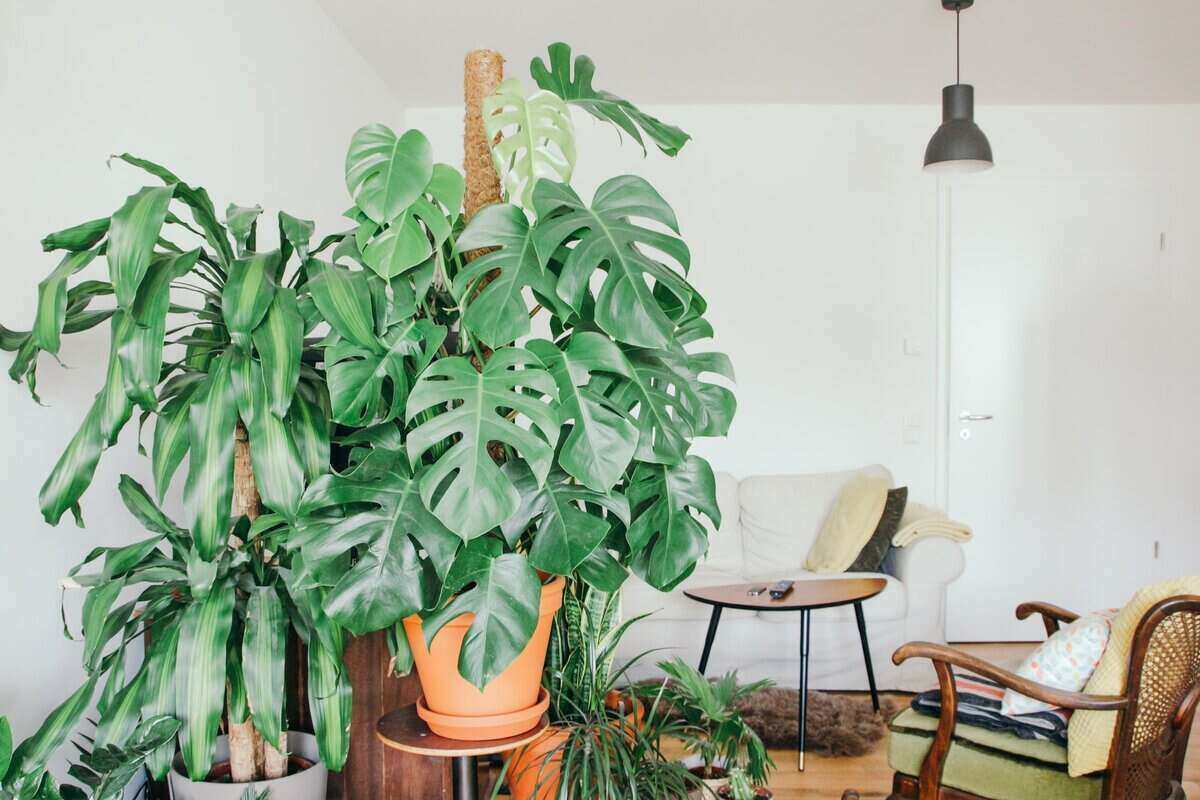
Houseplants root themselves in our lives because they bloom, brighten the scene, make us feel better and maybe even help purify the air. But which indoor plants are best at cleaning the air and how many do you need? We’ll cover all that and more in this article.
The problem: Indoor air quality has become important as households deal with pollutants from paints, carpeting, furniture and cleaning agents, such as formaldehyde, benzene, plastics and other volatile organic compounds or VOCs.
A possible solution: Houseplants have had the reputation of purifying the air since a 1989 NASA study seemed to confirm that. The study looked at several common plants and measured how many pollutants they absorbed, including xylene, trichloroethylene, carbon monoxide and toluene.
While it’s worth noting that the testing room was a sealed chamber, what’s surprising is the part of the plant that seemed to be filtering the air.
“Perhaps the most important finding, and one that surprised the researchers, was just how, and what part of, the plant was doing the bulk of the filtering: the roots and soil. As part of the experiment, the researchers removed all the leaves and learned that the air-purifying effect was only a tiny bit less than before,” NASA Spinoff said in a recap of the study.
How Houseplants Purify the Air
- Leaves as air filters: The leaves of houseplants help purify the air and relieve allergies by capturing or filtering dust and mold.
- More oxygen in the air: Houseplants naturally take up carbon dioxide and release oxygen.
How many plants do you need to combat indoor air pollution? Research says at least two large plants for a 100-square-foot room can help to purify the air. The larger the leaf the better.
3 Popular Plants to Purify Indoor Air
Monstera
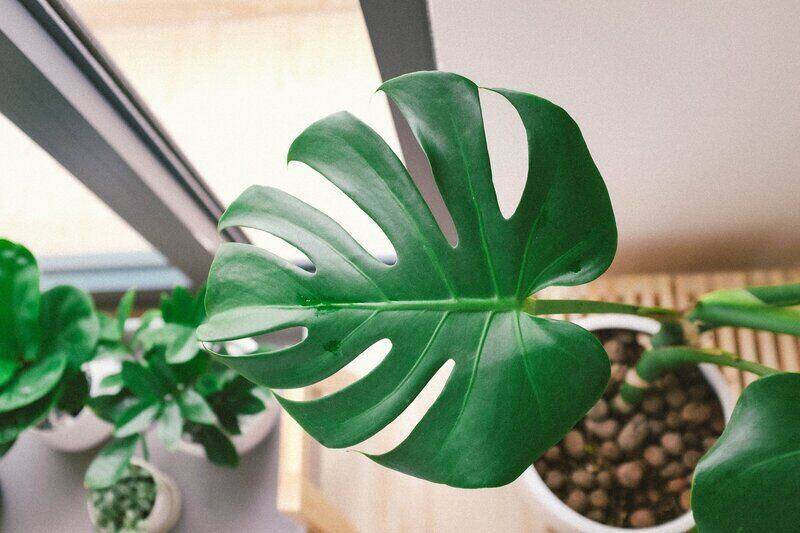
Monstera, commonly called Swiss cheese plant, has green leaves riddled with holes or gaps, and those openings may explain why it’s believed to be one of the most effective plants at cleaning the air inside your home.
Care, sun, and water: Monstera is fairly easy to grow in a sunny or bright window, such as south or west facing windows. Allow soil to dry out a bit before watering. Monstera is sensitive to overwatering.
Little Swiss monstera, a new introduction and one of the Trending Tropicals from Costa Farms, starts out desktop size.
Split philodendron

Split philodendron’s green leaves are reputed to remove pollutants from the air, including formaldehyde.
Care, sun, and water: Split philodendron has been a popular houseplant for decades, but it can quickly outgrow its home. Keep the soil moist, but not sopping wet. This houseplant can take low light to medium light. An east or north window may work well.
Shangri-la, a new split philodendron from Ball Ingenuity does not vine, making it a good fit for small apartments and condos.
Golden pothos
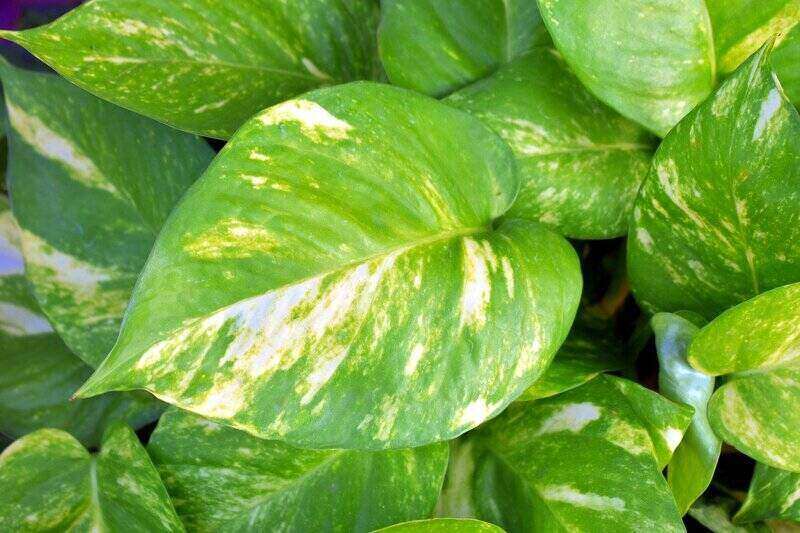
Golden pothos (Epipremnum aureum), also called devil’s ivy, has heart-shaped green leaves with splashes of gold. Golden pothos is one of the top houseplants recommended for air purification.
Care, sun, and water: Golden pothos is probably one of the best houseplants to grow for beginners and is readily available. It can be grown in potting mix or water. It is a low-maintenance trailing plant, but may need hooks to keep it looking great. It does best with indirect bright light.
Pro Tip: Although houseplants may help purify the air, some, including philodendron and monstera, can poison your pet. The ASCPA has a list of toxic and poisonous plants for cats, dogs and other pets.
12 Other Houseplants Said to Fight Indoor Air Pollution
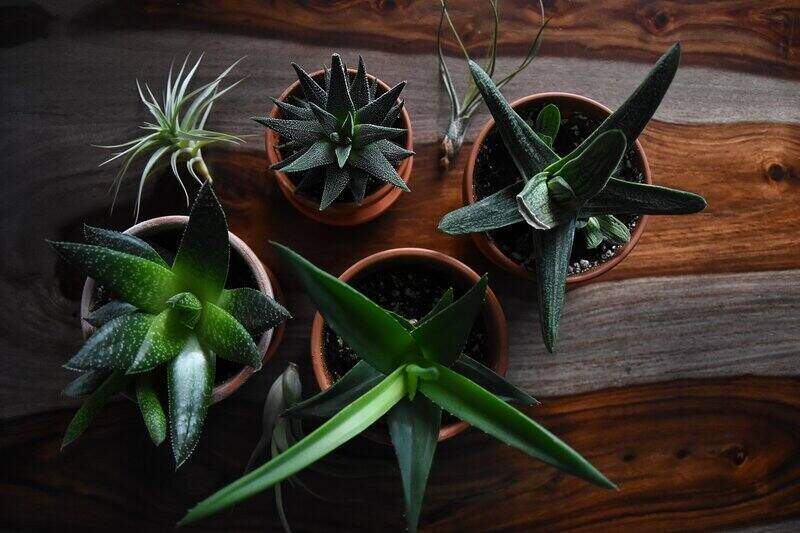
Looking for a wider variety of plants for your indoor garden that can help purify the air? Here are a dozen, and aloe has a double benefit — it can filter air and relieve sunburn, too.
- Aloe vera
- Areca palm (Dypsis lutescens), also called golden cane palm
- Bamboo palm (Chamaedorea seifrizii)
- Chinese evergreen (Aglaonema)
- Dracaena, sometimes called corn plant
- Flamingo lily (Anthurium andraeanum)
- Lady palm (Rhapis excelsa)
- Peace lily (Spathiphyllum)
- Rubber plant (Ficus elastica)
- Snake plant (Sansivieria), sometimes call mother-in-law’s tongue
- Spider plant (Chlorophytum comosum)
- Weeping fig (Ficus benjamina)
2 Flowering Plants to Promote Fresh Air Indoors
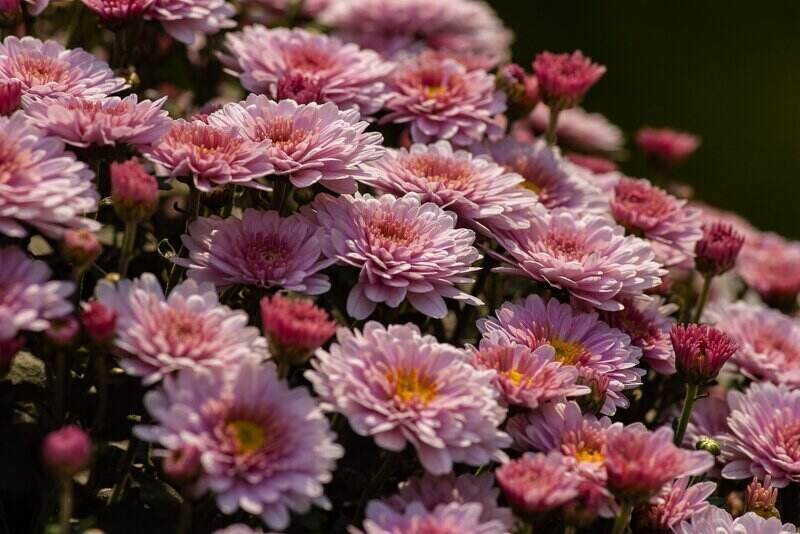
Flowers brighten a room, and flowering plants like the Gerber daisy and mums can help to purify a room’s air, too. Maybe that expression “Fresh as a daisy” relates to indoor air quality? And if you’re looking for a fall favorite brought indoors that can filter the air — well, mum’s the word.
- Gerber daisy (Gerbera)
- Mums (Chrysanthemum)
Benefits of Houseplants
Beyond filtering air in your home and aside from periodic frustrations with sickly houseplants, greenery and colorful flowers make us feel better.
Indoor plants:
Improve health
Patients with plants in their post-operative recovery room said plants had a positive influence linking directly to health outcomes of surgical patients. This Kansas State University study confirmed the therapeutic value of plants in the hospital environment as a noninvasive, inexpensive, and effective complementary medicine for surgical patients.
Lift moods

Flowering plants immediately make people happy with a long-term positive effect on moods. Participants in a Rutgers University study said they were less depressed, less anxious and less agitated after receiving flowers. Study participants expressed a higher sense of enjoyment and life satisfaction.
Increase focus
Houseplants in classrooms help students focus better, according to a small study reported by the Multidisciplinary Digital Publishing Institute.
Come with heartstrings
Many houseplants are our sentimental connection to family and friends who shared starts of their greenery.
The Business of Houseplants
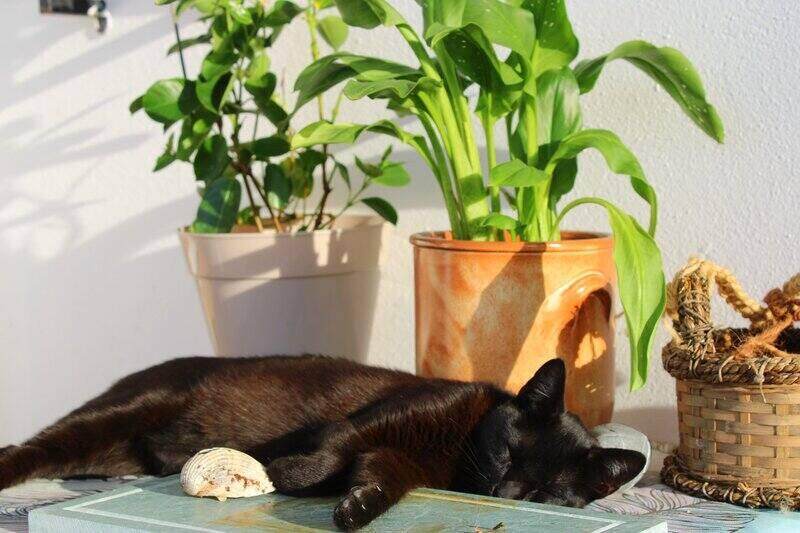
The market for houseplants has blossomed over the last few years, especially among millennials. This group accounts for at least one-third of houseplant sales in the United States, The Economist reported in 2018.
“What explains the growth in greenery? Young people are more likely than their elders to live in city flats without gardens. Although houseplants grow and require care, they are neither as demanding nor as costly as pets or children,” The Economist wrote.
Between 2016 and 2019, the houseplant industry grew by 50% ($1.7 billion), according to a National Gardening Association’s annual survey.
All the rage again: It’s almost like the last houseplant rage in the 1970s when ferns, philodendron and pothos could be seen strapped in macrame, hanging in the windows of millions of households.
Stuck at home with houseplants: The COVID pandemic fueled interest in houseplants even more. Homeowners and apartment renters, including many beginners, grew green thumbs and took up indoor plants as air cleaners.
With everyone stuck at home during the pandemic, gardening with houseplants became a thing. At least 71% of greenhouses in North America reported houseplant sales increased, according to Greenhouse Magazine’s 2020 State of the Industry report. An optimistic 67% expected increased sales to continue in 2021.
The 2019 National Gardening Survey also found that at least one-third of houseplants sales were attributed to 18- to 34-year-olds. There’s even a name for this group: Plant parents.
How to be a Good Plant Parent
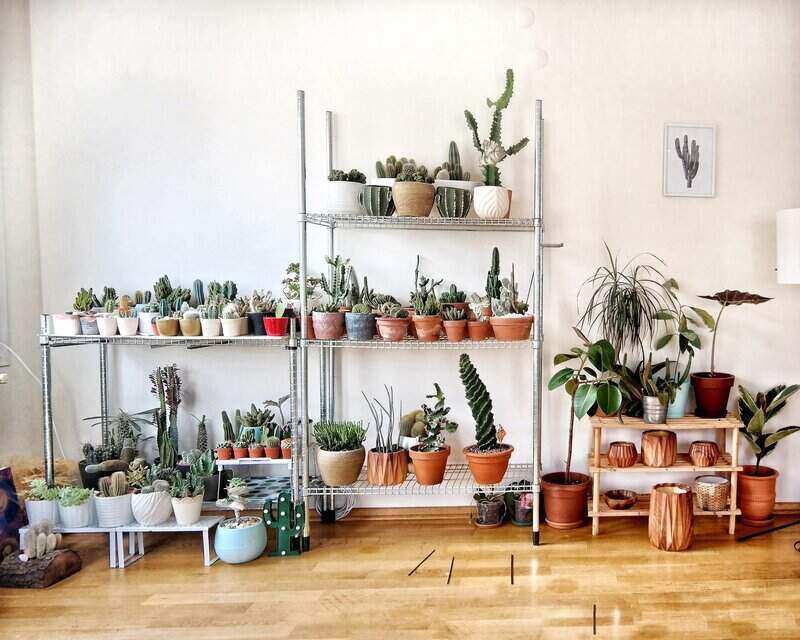
And how can you be a good plant parent? Cut back on fertilizing and watering during winter months. Growth usually slows down as light decreases. Read and follow the directions of the fertilizer you use.
Something we didn’t cover in this article is the benefits and care of an indoor herb garden. If you’re looking to improve the smells inside your home — if not purifying the air — nothing beats the scent of basil and chives in the kitchen.
And when it comes to outside greenery, a lawn care pro or landscaper near you can help you to create the yard and garden of your dreams.
Just as greenery and flowers lift your mood indoors, gardens outdoors have the same power. Watching butterflies, hummingbirds, even bees lighting on garden flowers can lift your spirits.
Main Photo Credit: Brina Blum / Unsplash

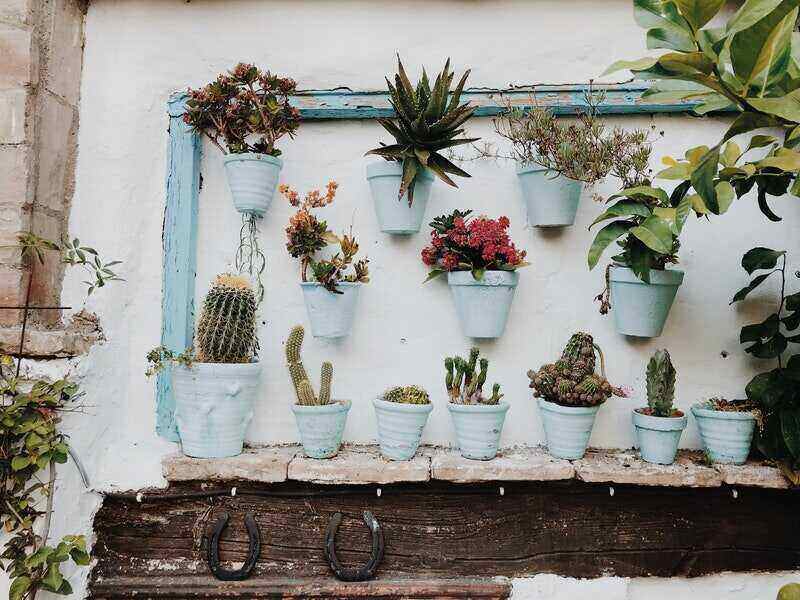

![10 Best Garden Shears of 2025 [Reviews] gardener pruning old tree sharks with text overlay on it](https://www.lawnstarter.com/blog/wp-content/uploads/2021/08/Best-Garden-Shears.jpg)
